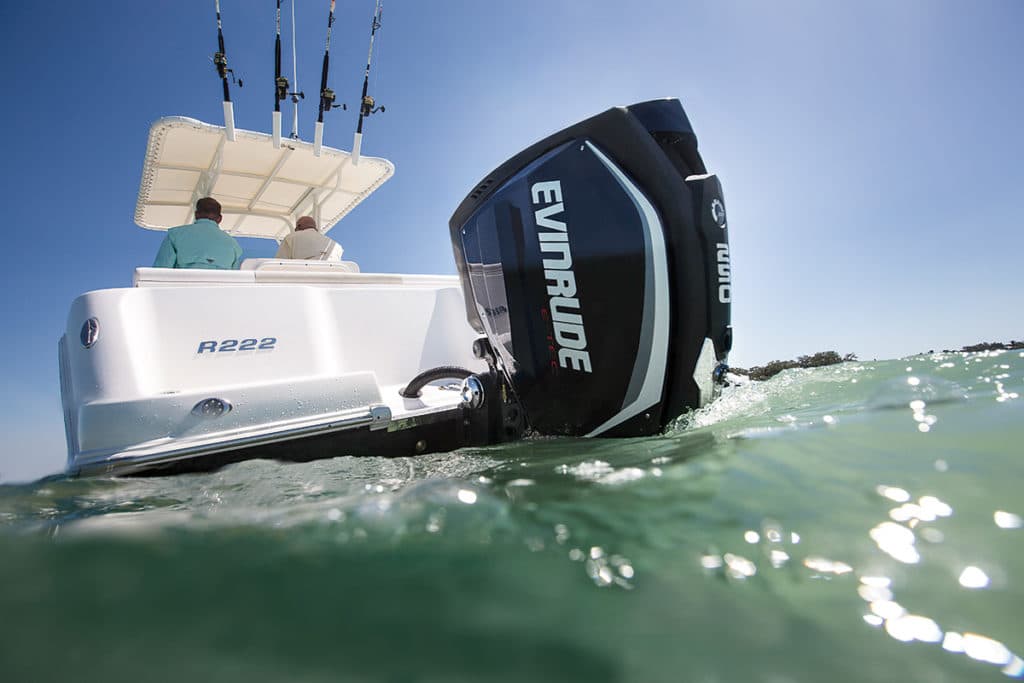
Installing new engines is a great way of rejuvenating older boats. At the same time, you can replace or upgrade related systems. Thanks to technological advancements in marine propulsion, your choices are greater than ever, giving you a lot more to think about than just swapping out engines. Let’s look at seven points to consider in your next repower project.
One Editor’s Personal Repowering Story
Power Up
Find out the maximum horsepower rating and go for it. That’s where your boat will perform at its best and get the best fuel economy, because the engines aren’t struggling. No one complains about too much horsepower, but you may rue the day you decided to cut back. For sterndrives, you might also need to upgrade the drive with a beefier unit that will accommodate additional torque.
Air It Out
If you’re ramping up inboard-engine horsepower or switching from gasoline to diesel, the power plant might need more air than the current ventilation system can provide. Diesels in particular need a lot of air. Check with your engine dealer or manufacturer to find out if you need to upgrade and enlarge the ventilation system.
Get Control
Electronic controls and digital gauges are standard on many new boats, and with good reason. Fly-by-wire throttle and shift make handling easier. Digital gauges provide far more information — including fuel consumption and best mpg — than old-school analog gauges could ever provide. So upgrade to these elements if they are offered with the new propulsion system.
Steer It Right
A repower project is a great time to evaluate the steering system, be it hydraulic or mechanical. Check and, if deemed necessary, replace aging components such as cables, actuators, hoses or hydraulic helms. Also consider power steering. Many new engines are available with integral power steering, but there are also add-ons such as SeaStar Solutions’ Optimus EPS system.
Juice It
Marine engines with integrated power-steering systems and high-pressure fuel-delivery systems may require more electricity than an old battery system can deliver. So check the engine specifications or ask your dealer. At the very least, replace the old battery cables with fresh ones, because the old cables might be corroded inside. This unseen evil can result in too much resistance, lowering the voltage delivery and increasing amp draw to excessive levels. At the same time, think about adding a high-output alternator and an automatic charging relay to charge the house batteries with surplus voltage.
Fuel Delivery
Replace all of the boat’s fuel hoses with fresh U.S. Coast Guard-approved hose, making sure gasoline lines are ethanol resistant. Install fuel hoses and fittings with inside diameters (e.g., 3/8 inch) sufficient to sustain the engine’s fuel flow rate at wide-open throttle. Starving the engine of fuel not only hampers performance but can also lean out the fuel-to-air ratio and lead to engine damage. For a listing of Coast Guard fuel-hose specifications, visit boatingmag.com/proper-boat-hose-sizing. Also, it is critical to equip the fuel system with the type, size and number of filters as specified by the marine engine manufacturer.
Color Match
In the old days, you could get only one color from most outboard brands. Today, however, outboard brands offer a choice of colors to complement your boat color. Suzuki offers three hues — charcoal, white and matte black. Mercury also offers three colors — two shades of white and traditional black. Evinrude takes this a step further with optional color panels in five colors and 14 different accent colors for its E-TEC G2 outboard series.









